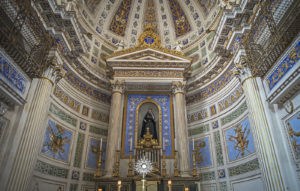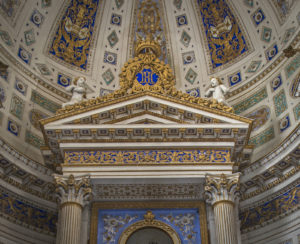To access the interior of the church you have to take a curved staircase and pass through a narrow space, the endonarthex (or inner narthex). Once past this tight entrance area, you are embraced by an expansive, bright and highly decorated oval space.
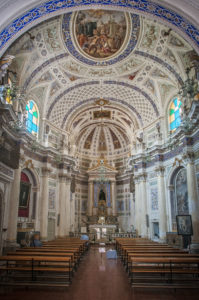
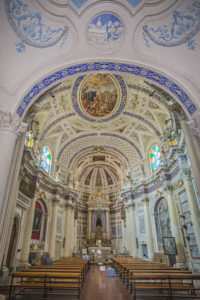
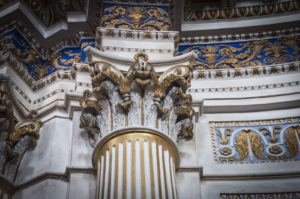 The walls of the church are marked by twelve
fluted half columns
The walls of the church are marked by twelve
fluted half columns
with
Corinthian capitals
between which paintings and plant decorations are inserted.
The capitals support a
trabeation
that follows the curved lines of the interior and stands out, with its deep blue and golden details, from the whiteness of the wall.
Near each column, above the trabeation and between the windows, are sculptures of angels.
The tension of the space and its expansion can also be felt in these details.
From the shutter of the large dome that towers above the church, six large stained glass windows open that introduce infinite shades into the sacred space.
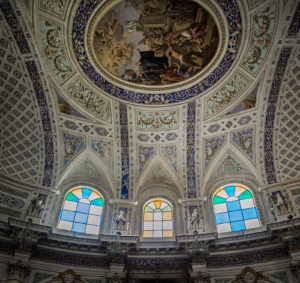
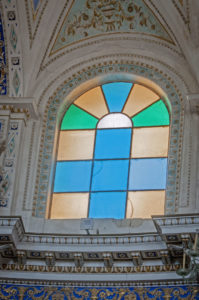
The vault, executed by
Giovanni Gianforma
in 1776, is abundantly decorated with stuccoes that feature geometric shapes in shades of blue and gold, while large transversal bands branch out from the fresco in the centre.
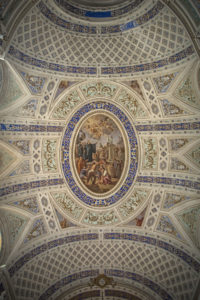
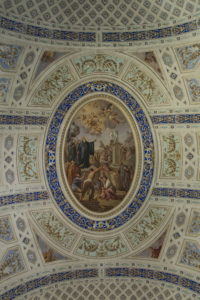
The church ends with an
apse
that is more elongated than the oval plan. Behind it is a majestic
aedicula
where the statue of the saint is kept.
This space is richly decorated with stucco and geometric designs in blue and gold, and is illuminated by the two smaller openings on the vault, which is also decorated.
